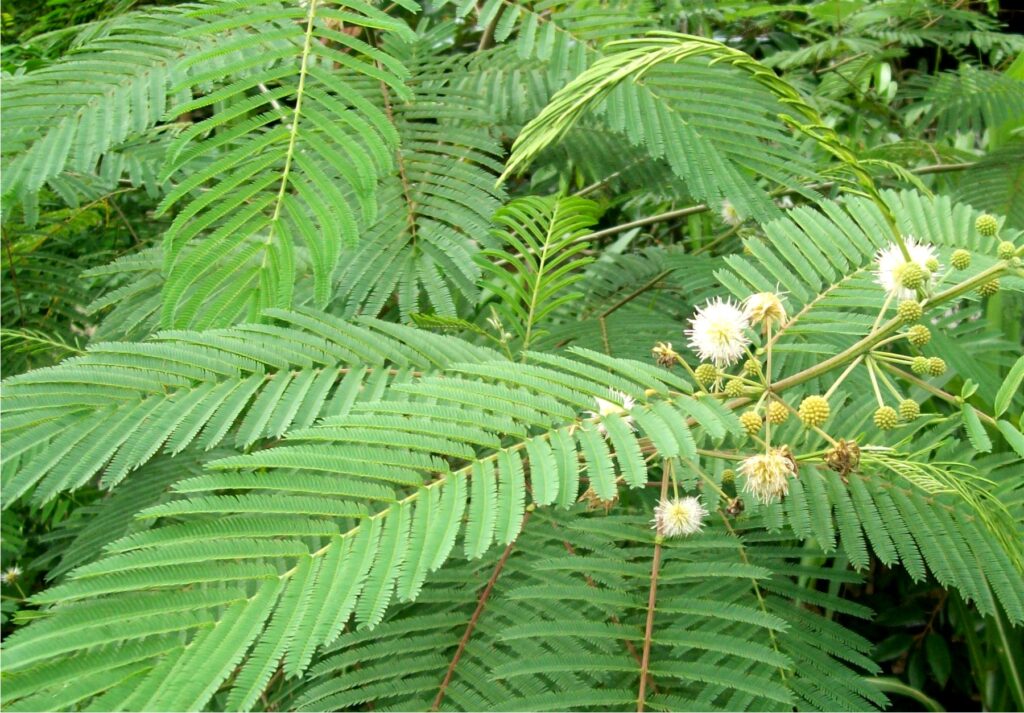Text and Photos by Henrylito D. Tacio
WHEN I was still a kid, I used to eat green seeds of ipil-ipil as a dewormer. But these days, you never heard people talking about it. In fact, when I was traveling from my hometown going to Davao City, I could count only a few ipil-ipil trees growing along the highway.
Whatever happened? To think of, ipil-ipil was promoted as a “miracle tree” during the 1970s and 1980s. The US National Academy of Sciences (NAS) described the tree as something that “offers the wildest assortment of uses.”
Let’s enumerate them one by one. As forage, ipil-ipil is “highlypalatable, digestible, and nutritious.” (However, its foliage contains mimosine, toxic to ruminants if consumed in “excessive amounts.”) Both beef and dairy cattle thrive on it and can live on ipil-ipil alone until mimosine-related toxicity occurs. This can be delayed or eliminated entirely by supplementing the diet with other forages.
“Livestock feed should not contain more than 20 percent” of ipil-ipil, as the mimosine can cause hair loss and stomach problems, remind the World Agroforestry Center.
In Batangas, a two-hectare area of ipil-ipil grown in association with atis was able to supply the fodder requirements of 20 growing cattle for six months.
At the Mindanao Baptist Rural Life Center (MBRLC) Foundation, Inc. in Kinuskusan, Bansalan, Davao del Sur, goats are given ipil-ipil leaves along with Flemingia macrophylla and Desmodium rensonii. “Our goats are growing very healthy when fed with these various forages,” said Rowe Celeste, the center’s goat supervisor.

A study has confirmed that native goats fed 30% rice straw, 50% dried ipil-ipil leaves, and 20% rice brain gained up to 69 grams per day on average. However, goats fed a higher proportion of dried ipil-ipil leaves (about 70%) gained only 36 grams per day on average.
Ipil-ipil can also be a valuable ingredient in poultry feeds, contributing to desirable yellow-yolked eggs and yellow-skinned broilers.
Another good thing about ipil-ipil is that it enriches the soil and aid neighboring plants because its foliage rivals manure in nitrogen content and natural leaf-drop returns this to the soil beneath the shrubs. One study showed that ipil-ipil leaves were comparable to ammonium sulfate in supplying the nitrogen requirement of rice plants in flooded and non-flooded soil conditions. Corn grain yields were equally as high whether fertilized with herbage from intercropped ipil-ipil in single hedgerows or with commercial fertilizer.
At the MBRLC, leaves of ipil-ipil are used as green manure for vegetable crops grown in its Food Always In The Home (FAITH) gardens. The leaves are placed inside the basket or trench composts.
But there’s more to ipil-ipil than just fertilizer. Its aggressive root system “breaks up impervious subsoil layers, improving moisture penetration and decreasing surface runoff,” to quote the NAS report. “Nutrients from deep strata are gradually deposited on the surface through decay of the leaves and other plant parts; soil organisms increase, topsoil humus rebuilds.”
A study done in Vietnam showed that mulching with ipil-ipil increases soil porosity, soil moisture, field capacity, and available water.
Ipil-ipil wood makes excellent firewood and charcoal. It has long been used for these purposes in the Philippines. The wood has uncommonly high density and calorific value for a fast-growing tree, and because the stumps readily regrow, the plant “defies the woodcutter.” Its calorific value is 4,200 to 4,600 kcal per kilogram.
In the Philippines, dense ipil-ipil plantations “have yielded higher annual quantities of wood that any species yet measure,” NAS reported. Annual ipil-ipil increments have been measured from 24 to over 100 cubic meters per hectare.
There are several other uses of ipil-ipil. It is planted in hedgerow systems with grass for cattle production in northern Australia. In other parts of Asia, it is grown in dense rows as a living fence and used to support vine crops such as pepper and passion fruit.
In Indonesia, ipil-ipil is a common shade tree for cacao and coffee. In Vietnam and some villages in Thailand, ipil-ipil is utilized as human food, with young shoots and leaves being eaten. In some provinces in the Philippines, the seeds are used as a substitute for coffee.
Other products include beadlike decorations made from the seeds and dyes extracted from the pods, leaves, and bark. In the Philippines, research is being done on seed gum for a pharmaceutical substitute for the imported guar gum used as a binder in tablet formulation.
The multifarious uses of ipil-ipil have been known by the innovative farmers in Naalad, Cebu. Leucaena: Promising Forage and Tree Crops for the Tropics reports: “For over 50 years, they have used leucaena for erosion control, soil reclamation, and fertilization on extremely deep, rocky hillsides.
“They plant blocks of their land with leucaena to control erosion and provide soil improvement. Some of the leaves are harvested, dried, and sold as leaf meal to local feed millers; almost, most households keep goats that are fed leucaena mixed with coconut and banana leaves. After 3-6 years, the blocks with leucaena are cleared (large pieces of the wood are sold for fuel) while an equal number are seeded with leucaena and left fallow…”
Leucaena leucocephala is the scientific name of ipil-ipil. The specific name ‘leucocephala’ comes from ‘leu,’ meaning white, and ‘cephala,’ meaning head, referring to the flowers.
History records said that it occurs naturally in the Yucatan Peninsula and the Isthmus of Tehuantepec in southern Mexico. In 1565, after their conquest of Mexico, the Spanish conquistadores organized trade with the Philippines: each spring, a galleon left Acapulco on Mexico’s west coast and crossed the Pacific. Sometime during the 250 years that this continued, ipil-ipil reached the Philippines, probably carried as forage.

